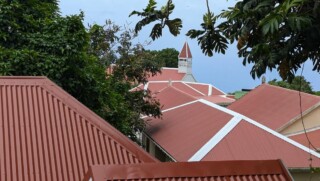News
Health Department Bonaire warns against Dengue, Chikungunya and Zika
07-10-2023 -
1 minuten leestijd
2006
Prof. Frank Hadley Collins, Dir., Cntr. for Global Health and Infectious Diseases, Univ. of Notre Dame
This 2006 photograph depicted a female Aedes aegypti mosquito while she was in the process of acquiring a blood meal from her human host, who in this instance, was actually the biomedical photographer, James Gathany, here at the Centers for Disease Control. You?ll note the feeding apparatus consisting of a sharp, ?fascicle?, which while not feeding, is covered in a soft, pliant sheath called the "labellum?, which is seen here retracted, as the sharp ?stylets? contained within pierced the host's skin surface, as the insect obtained its blood meal. The fascicle is composed of a pair of needle-sharp stylets. The larger of the two stylets, known as the "labrum", when viewed in cross-section takes on the shape of an inverted "V", and acts as a gutter, which directs the ingested host blood towards the insect's mouth. This female?s abdomen had become distended due to the blood meal she was ingesting, imparting the red coloration to her translucent abdominal exoskeleton.
DF and DHF are primarily diseases of tropical and sub-tropical areas, and the four different dengue serotypes (DEN-1, DEN-2, DEN-3, and DEN-4), are maintained in a cycle that involves humans and the Aedes mosquito. However, Aedes aegypti, a domestic, day-biting mosquito that prefers to feed on humans, is the most common Aedes species. Infections produce a spectrum of clinical illness ranging from a nonspecific viral syndrome to severe and fatal hemorrhagic disease. Important risk factors for DHF include the strain of the infecting virus, as well as the age, and especially the prior dengue infection history of the patient.
The Public Health Department of the Public Entity Bonaire (OLB) is urging residents to protect themselves against Dengue, Chikungunya, and Zika, as the rainy season increases the risk of these diseases.
The Aedes aegypti mosquito, which can transmit these diseases, lives in and around homes and lays its eggs in stagnant water, such as plastic containers and car tires. Removing these breeding sites is highly recommended.
Mosquito bites
Apart from the elimination of breeding grounds, the Government points out that it can be important to prevent being bitten by the mosquito, for instance by wearing protective clothing and using insect repellents to prevent mosquito bites. Disease-carrying mosquitoes are especially active during the day.
110












